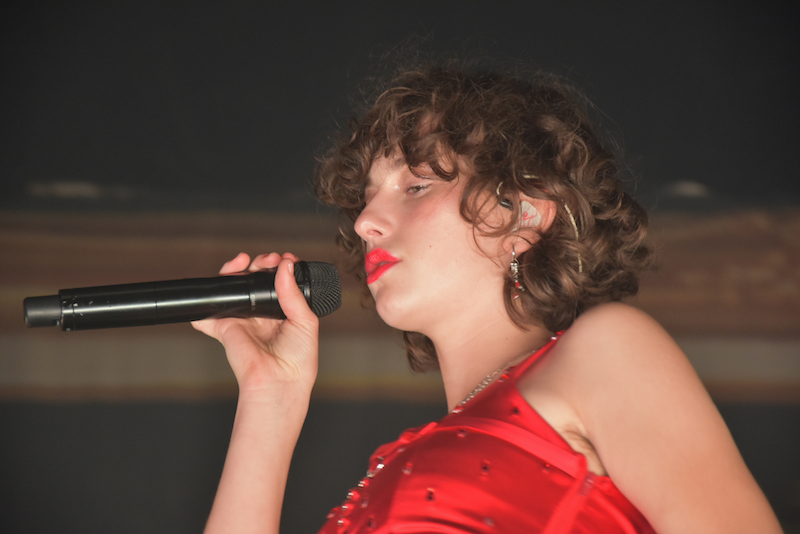King Princess redefines angry queer pop at MTELUS
Drag queens, young queer couples heavily making out, bitter and angry love ballads; this is what defines a typical King Princess concert.
Even though the LGBTQ+ icon performed at Corona Theatre only months ago in May and later in August for Osheaga 2019, she returned to Montreal on Oct. 29, just days after the release of her debut album, Cheap Queen, on Oct. 25.
The night began with a special performance by local Montreal drag queen Denim Pussy, who wooed the crowd with their stage presence to the beat of Charli XCX’s “Vroom Vroom.”
The drag portion itself was enough for audience members to agree with the commonly-used phrase, ‘We are here, and we are queer,’ referring to those in the LGBTQ+ community. Indeed, we were all in the right place.
“All my pain becomes songs for the gays,” KP slurred, with a cold beer in one hand and her trademark green electric guitar hanging from her shoulder; a giddy smile plastered on her face.
She started off her set on the piano with “Isabel’s Moment,” a slow interlude-turned-intro track for the purpose of the concert, right before she jumped into “Tough on Myself.”
As soon as audience members heard the low guitar strums of the more sensual track, there was a shift in atmosphere at the venue. I’m not just referring to the young couples eating each other’s faces like it was the end of the world. No, rather I’m talking about the message Mikaela Straus, a.k.a. the “King” herself had for fans: “Listen to the album, bitch! It’s f*cking good!”
After a melodic transition from “Useless Phrases” into the title track, “Cheap Queen,” the tone was set for the singer to express the string of emotions behind most of the songs from the album. It was pretty clear that the performer was, for a lack of better words, bitter and angry towards her ex-lover.
“It’s fine guys. I’m better now.”
Could’ve fooled me KP.
After the way she delivered performances for songs like “Talia,” “Trust Nobody,” and “You Destroyed My Heart,” it seemed like the artist was projecting the heaviness within the lyrics. The dim lighting, angry guitar solos and head-banging beats definitely said otherwise.
Nice try KP, but you aren’t fooling anybody with songs like these. If anything, your Sagittarius was emanating more than ever before.
If the title of the song “Pussy Is God” doesn’t scream dramatic enough, then rest assured, because its performance brings it to life. A stand-alone single released in late 2018, the anthem was a hit moreso live on tour.
“1950,” the song that launched KP’s career to stardom, began with a few off-beat conundrums, showing audience members that anything can happen during live performances.
“So, Montreal, who wants to hit my back?” she snickered as she addressed the crowd.
With “Hit the Back,” a lively and electric performance full of shuffling light effects and colorful flashes, the audience was jumping and dancing, even fist-bumping the air to close off the concert with a loud and energetic ambiance.
All’s well that ends well. A foot-stomping encore as demanded by the crowd brought the singer back on stage to deliver a finale with Cheap Queen’s closing track, “If You Think It’s Love,” and a performance of her unreleased track “Ohio” as a little homage to fans.
One thing is for certain: King Princess knows how to keep her audience on their toes. Judging from the attendees’ enthusiasm, Montreal is looking forward to her inevitably epic return.
Photos by Laurence B.D.
